The content of the article:
- Preparing the soil for growing perennials.
- How to prepare seeds for sowing.
- Sowing perennial seeds.
- Growing perennials from seeds in an apartment.
- How to grow perennials in open ground.
Growing perennial ornamental plants from seeds is a cheap but not easy way. To The efforts of the florist were crowned with success, you need to gain knowledge, and also patience.The main conditions for the success of growing perennials from seeds: knowledge of the requirements of each plant for soil composition, depth of seeding, temperature, light, watering. In addition, the seedlings of some perennials are so tiny that not everyone will agree to work with them.
Soil preparation
Do not try to prepare a nutrient mixture for sowing seeds: seedlings that have just emerged from the seeds simply will not be able to absorb the nutrients offered to them. A peat-humus mixture for seedlings of perennial flower crops will be sufficient. Add coarse river sand (3:1) to it, remove lumps and unrotted plant debris, and the seedling soil is ready: moderately dense and nutritious.
Containers for sowing seeds are chosen with a depth of no more than 5-6 cm. Drainage holes must be made.
Preparing seeds for sowing
Let’s switch from soil preparation to seed preparation. There are no universal techniques here and cannot be. The seeds of some perennials will not germinate without stratification (exposure to low temperatures), others require scarification, that is, before sowing, their hard shell must be broken so that moisture penetrates inside the seeds and they can germinate.
This can be done by placing the seeds on sandpaper and rolling them on it, while not forgetting about the safety of your own fingers. The seeds of plants such as lavender, sage, and thyme are covered with a layer of essential oils, which also prevent germination. You can help them awaken by soaking them in a zircon solution for 10-12 hours before sowing. Zircon will also help if you are not sure about the germination of seeds.
The longest time you have to tinker is with the seeds of perennials that require stratification.Not everyone always has enough time to do this. You can replace stratification by soaking them in stimulants. Not all of them sprout, but a few bushes of perennials are usually enough for a small area. After all delphinium or lavender is not petunia for you or marigold, of which several dozen are required to decorate a flower garden.
How to sow perennials
Let's move on to sowing. At the bottom of the container, pour a half-centimeter layer of coarse-grained river sand, and on it - the prepared soil mixture. Lightly compact. An absolutely flat soil surface should not reach the edge of the container by 3-5 mm. Using a sprinkler we moisten the soil (after watering it will still sag).
Carefully place the perennial seeds that have undergone pre-sowing treatment, pressing lightly with a match, on the surface every 1.5-2 cm. With large seeds everything is simple, but with small ones you will have to tinker. We pour them onto a piece of thick paper, slightly bent in the center, and very carefully use a pointed match or toothpick to push them along the “groove” onto the soil surface.
When growing perennial flowers, you must keep in mind that some seeds awaken to life only in the light, others need darkness for this.
Perennials germinating in the light. The seeds of delphinium, platycodon, aquilegia, goldenrod, aubriet, heuchera, oregano, small petals, bells, cuffs and many others. Therefore, we do not embed them in the soil, but only sprinkle them with sand and place them in a bright place (but not on the windowsill).
Perennials that grow in the dark. Seeds of monarda, geranium, cinquefoil, sage, agastache, gypsophila, yarrow, lychnis, cloves, sunflower, oriental poppy, doronicum, perennial aster, chrysanthemums They germinate in the dark, so we sprinkle them with a layer of the prepared mixture 2-3 mm thick, lightly crush them with sand and place them in a dark place.
The soil in the seed containers should be slightly moist, not “wet”. Moistened and covered with glass or film, it retains moisture for a long time, so the crops do not need to be disturbed for the first week.
When the shoots appear. After a week or two, we begin to check whether shoots have appeared. Most perennials sprout on average in 14 days. Seeds of delphinium (21-28 days), aquilegia (up to 35 days), sage, oriental poppy, and bellflower (14-20 days) require more time to hatch. And the sunflower can rise already on the 5-6th day. The number of shoots depends on the freshness of the seeds.
Growing perennials from seeds in an apartment
Temperature for germination. The optimal temperature for seed germination for most perennials is from +18 to +20 degrees, but there are exceptions. For example, oriental poppy seeds germinate more actively in cool temperatures - +12 degrees, while hibiscus and sage require a warmer pre-emergence microclimate - +25 degrees.
In what conditions to grow perennial seedlings. We place the containers with the emerging shoots on the windowsill, protecting them from the hot, dry air of the radiators with “screens” at least 30-40 cm high (cardboard boxes cut diagonally can be used under the screens).
The post-emergence microclimate for perennials should not be hot - no more than +15 +18 degrees.Cover the side of the screen facing the window with foil: the light reflected from it will prevent the seedlings from stretching. In the early morning hours and evening, additional lighting is desirable.
Feeding seedlings. As soon as the seedlings hatch, we carefully remove the weakest ones with tweezers, giving space to the larger and stronger ones. In the phase of 1-2 true leaves, we begin to feed with complex water-soluble fertilizer for seedlings. Nitrogen in such fertilizers should be no more than 10 percent.
With a lack of light, plants overfed with nitrogen stretch out, which contradicts our goal of growing bushes that are compact and balanced in all respects. We feed, following the recommendations indicated on the package.
Watering. We water the perennial seedlings moderately and carefully: first along the sides of the container so that the moisture reaches the roots, then very carefully between the plants. In the evening, before turning off the lighting, lightly spray the seedlings with settled (even better - snow) water to increase air humidity and reduce the temperature around the plants.
Picking grown seedlings. At the stage of 2-3 true leaves, the plant can be planted in separate cups or in a wider and deeper container at a greater distance.
If few seeds have sprouted, they can be left to grow before planting in open ground in the same container.
In the second half of May, we plant the seedlings, pre-hardened in the fresh air, in a nursery bed in a semi-shaded place, and at the end of summer - in a permanent place in the sun or shade, depending on where it is best to grow a particular plant.
How to grow perennials from seeds in open ground
If you do not like to tinker with seedlings, we can advise you to sow perennial seeds in April directly into open ground.
Carefully prepare a small bed, water the furrows, sow the seeds and cover the nursery with film on the arches. When the summer heat subsides, transplant the perennials to a permanent location.
I have successfully grown in open ground gaillardia, sunflower, gauru and even hibiscus. But this method is not suitable for growing perennials with very small (dusty) seeds; they must be grown only indoors.
Such wonderful plants as rock alyssum and felt grass, you can immediately sow it in open ground in a permanent place under the film. They need to be sown not in a long furrow, but in a prepared place of a round or oval shape with a diameter of 40-50 cm. With proper care, both alyssum and jasmine can be grown in one place for a very long time.
You might be interested in:

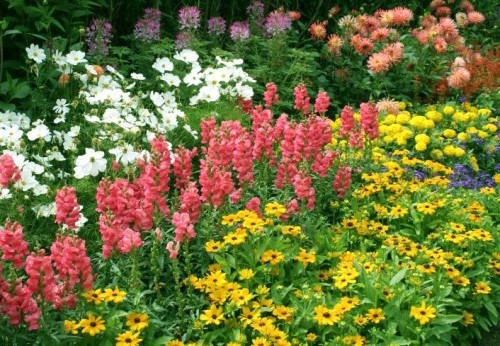
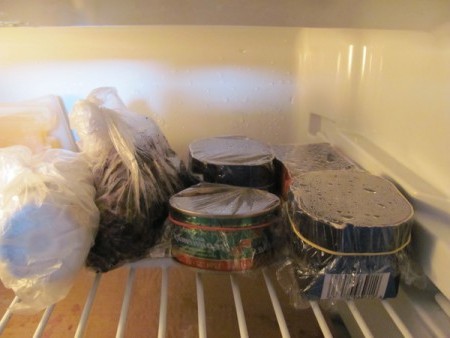
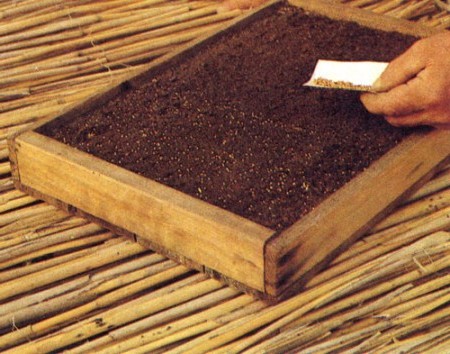
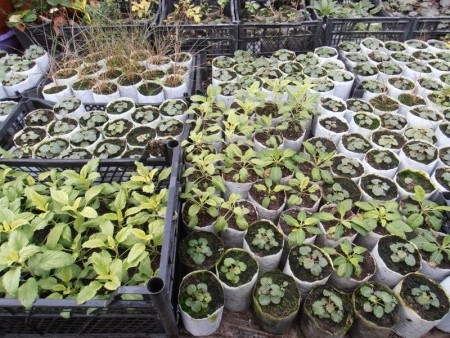
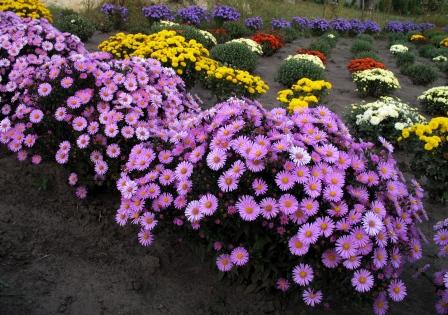


 (5 ratings, average: 3,40 out of 5)
(5 ratings, average: 3,40 out of 5) CUCUMBERS NEVER GET SICK, I'VE BEEN USING ONLY THIS FOR 40 YEARS! I SHARE A SECRET WITH YOU, CUCUMBERS ARE LIKE THE PICTURE!
CUCUMBERS NEVER GET SICK, I'VE BEEN USING ONLY THIS FOR 40 YEARS! I SHARE A SECRET WITH YOU, CUCUMBERS ARE LIKE THE PICTURE! You can dig a bucket of potatoes from each bush. Do you think these are fairy tales? Watch the video
You can dig a bucket of potatoes from each bush. Do you think these are fairy tales? Watch the video
 How our fellow gardeners work in Korea. There is a lot to learn and just fun to watch.
How our fellow gardeners work in Korea. There is a lot to learn and just fun to watch. Eye trainer. The author claims that with daily viewing, vision is restored. They don't charge money for views.
Eye trainer. The author claims that with daily viewing, vision is restored. They don't charge money for views. A 3-ingredient cake recipe in 30 minutes is better than Napoleon. Simple and very tasty.
A 3-ingredient cake recipe in 30 minutes is better than Napoleon. Simple and very tasty. Therapeutic exercises for cervical osteochondrosis. A complete set of exercises.
Therapeutic exercises for cervical osteochondrosis. A complete set of exercises. Which indoor plants match your zodiac sign?
Which indoor plants match your zodiac sign? What about them? Excursion to German dachas.
What about them? Excursion to German dachas.